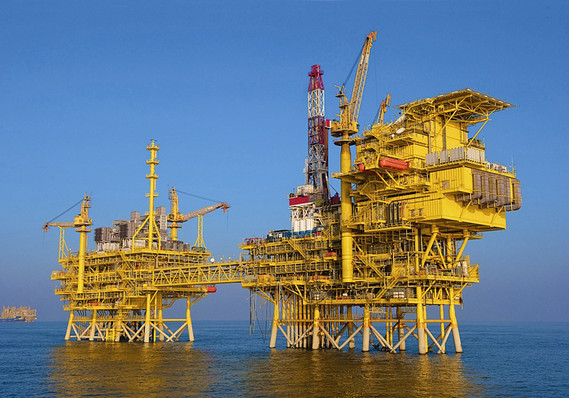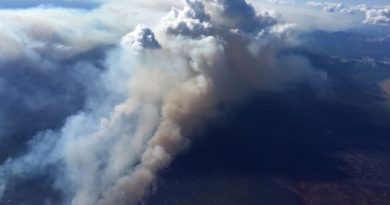Conoco sends up a new oil rig but Alaska production declines anyway

A new ConocoPhillips drilling rig — brought to the North Slope after the Legislature voted to slash taxes on Alaska’s oil producers — has begun pumping 1,600 barrels of new oil a day while supporting about 100 jobs directly.
But Conoco’s overall oil production in Alaska fell by 20,000 barrels between the second and third quarters of the year, the result of “planned downtime, seasonality and normal field decline,” according to a press statement released on Thursday by ConocoPhillips Alaska.
The company produced 178,000 barrels of oil in Alaska in the third quarter.
Conoco also reported on Thursday that it had earned $494 million in profit in the third quarter, down $89 million from the second quarter.
Meanwhile, Conoco’s estimated tax bill for the third quarter included $652 million in taxes and royalties paid to the state of Alaska.
Conoco, the state’s largest oil producer, is the only one of Alaska’s three major oil producers to separately report its Alaska earnings.
The numbers are critical in a state that for decades has been at war over how much to tax the oil producers. The revenue to Alaska has long been hefty enough to pay for most state services while eliminating the need for a personal income tax.
But with oil production dwindling to scary lows, Gov. Sean Parnell and the Republican-dominated Legislature passed a new tax regime this spring, set to go into effect Jan. 1. It will be worth hundreds of millions of dollars yearly to Conoco and other Alaska oil producers.
Supporters say the tax cut will lead to new investment, jobs and more production. Opponents say the cut will never pay for itself. And while it might slow the decline that has occurred since Alaska production peaked 25 years ago, it won’t turn that decline around, they say.
Conoco said in the press release that it’s taking steps to produce more oil in the wake of the tax cut.
Following its quarterly earnings announcements, Conoco typically issues statements highlighting what it earns in Alaska and what it pays, with company executives routinely praising the value of lower taxes. This time was no different.
In the first nine months of 2013, Conoco paid an estimated $2.2 billion in taxes and royalties to Alaska, while earning $1.6 billion, the company said. It paid about $900 million in federal taxes too, the company reported.
“As we have reported historically, under the ACES production tax regime we pay almost twice as much in taxes and royalties as we keep,” said Bob Heinrich, the company’s vice president of finance. “The recent oil tax change passed by the Legislature with SB21, the ‘More Alaska Production Act,’ improves the business climate in Alaska. As a result of these improvements, we are now looking forward to increasing our North Slope investment.”
In its statement, ConocoPhillips Alaska reiterated two previously announced plans that it has said were made more likely by the tax cut: The Greater Moose’s Tooth No. 1 — located in the National Petroleum Reserve-Alaska — is one. The other is Drill Site 2S in the Kuparuk River Unit.
If the projects happen, they could add about 38,000 barrels of oil per day to Alaska’s production by 2018, the company said.
Final approval for both projects will be considered late next year, the company said.
Permits were filed in July for the Greater Moose’s Tooth project, which would cost about $900 million and create about 400 jobs, with hundreds more workers needed during construction, the statement said.
“Construction could begin in 2016 and continue in 2017, with first oil expected in late 2017. Estimated peak production is 30,000 (barrels daily),” the statement said.
The Kuparuk Drill Site 2S — on the southwest flank of the Kuparuk River Field — will cost an estimated $600 million and create about 230 jobs during production. Estimated peak production will be about 8,000 barrels daily, and first oil is expected in 2015.
While Conoco’s production continues to fall as Prudhoe Bay has aged, the company’s production in the booming shale-oil regions of the country — the Eagle Ford, Bakken and Permian basins in Texas and North Dakota — increased by 40 percent from the year before, according to news reports of the earnings announcement.
That’s a slap in the face for Alaska, which recently received news that Pioneer Natural Resources, the North Slope’s first independent explorer and producer, is selling its stake in a pair of small fields to a fledgling and little-known oil company to help pay for increased development in Texas’ Permian Basin. Pioneer took a $350 million loss to get out of Alaska.
Contact Alex DeMarban at alex(at)alaskadispatch.com



